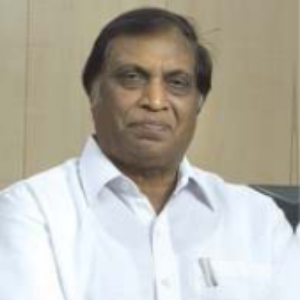Title : Fabrication of heterojunctions on silicon nanowires on Si Chip, CdS/p-Si for electricity generation from moisture and n-SnO2/p-Si for UV detection
Abstract:
Creating a heterojunction on a silicon nanowire (Si NW) within a silicon chip holds significant promise for developing a variety of new devices through band gap engineering. One-dimensional heterojunction devices are gaining traction due to their enhanced carrier collection, which ultimately improves device efficiency. In our study, we detail the synthesis of CdS/p-Si nanowire (NW) heterojunction devices using wet-chemical methods. These devices show great potential for generating electricity from atmospheric moisture. A single CdS/p-Si NWs heterojunction-based Moisture-Enabled Electricity Generator (MEG) device demonstrates a saturated maximum output voltage ranging between 250-300 mV, with a saturation current of approximately 0.2 µA in humid conditions. This rudimentary module represents a promising candidate for future energy generation devices. These devices can be easily scaled up by connecting individual units either in series or in parallel to generate high electrical power efficiently.
In addition, traditional UV sensors are typically made of silicon carbide, requiring significant processing time and costs. Here, we present the fabrication and characterization of an ultrafast, highly sensitive, and selective UV sensor using silicon nanowires on a silicon chip. We achieved this by employing Metal Assisted Chemical Etching of polycrystalline (pc) p-Si, resulting in vertically aligned, uniformly grown, highly dense pc-SiNWs. These nanowires, on a pc-p-Si substrate, are decorated with SnO2 particles using the electro-deposition technique. The SiNWs/n-SnO2 heterojunctions exhibit diode-like behavior under UV-light exposure, displaying significantly high rectification ratio, sensitivity, responsivity, and detectivity—approximately 172.3 at ±9 V, 64, 0.3456 A/W at 5 V, and 8.02869 x 1012 Jones, respectively. Barrier height calculations indicate that by decorating the Si nanowires with other desired metal oxides, the selectivity and sensitivity of the prepared heterojunction can be tailored for various applications such as infrared (IR) and terahertz (THz) sensing.
Audience Take Away
- In the range of new energy generation resources, the audience will be able to know about one more source, i.e., from moisture present in air.
- They can explore and enhance this concept by increasing the efficiency of this technique and towards device fabrication.
- Today this is a small source, but may become a big source of energy in future.
- As water is present in a very large quantity in the atmosphere in the form of moisture, this technique can become a very big source of energy at low cost, like solar cells.



